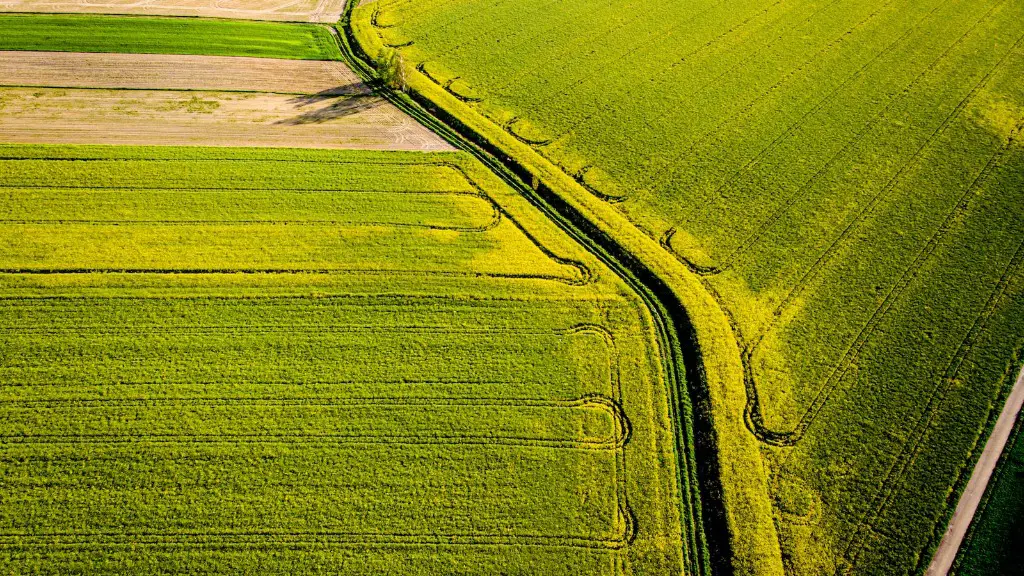Obtaining funds for a farming operation is becoming more difficult due to the decreased access to traditional sources such as banks and government grants. However, there are a variety of other options available to interested farmers that they can apply for.
The first step in applying for any form of financial assistance is to understand what is available. Researching which grants and loans are available locally, regionally and nationally can increase the chances of success. Moreover, there are numerous non-traditional finance sources available. Entrepreneurs and start-ups are entitled to venture capital and angel investors. There is also the possibility of crowdfunding or peer-to-peer lending.
Whenever funding is applied for, it is important to make sure that all potential sources are identified as far as possible. This will maximize the likelihood of obtaining finance, as well as making sure that no sources are overlooked. Additionally, farmers need to make sure that their business plan and collateral documents are up-to-date and have been thoroughly proof-read.
The documents that need to be completed and submitted for each application depend on the funding source. Each application form and requirements need to be read and understood carefully. It is advisable to double-check with the funding agency to make sure that all required documents are included in the application.
It is also important to remember that most agricultural funding projects involve a section of risk. It is important to carefully read any loan agreement or grant application to ensure that the proposed farm business will be able to meet the conditions, and that the terms are acceptable. Where needed, farmers should seek legal advice to make sure that they understand the implications of the agreement.
Lastly, farming projects benefit from having access to a variety of resources and contacts. This can be in the form of cooperative memberships, professional networks or government advisors. It is sometimes possible to negotiate funding by working with other involved parties, such as local governments or regional support organizations.
Farming in Underserved Communities
There are several initiatives that offer funding to farmers in underserved communities or to those that are starting anew. For example, projects related to food insecurity, access to safe food or access to markets often qualify for additional funding from public and private sources. Additionally, some programs are designed to encourage the use of new technology or organic methods for farming.
It is important to bear in mind that these types of projects may involve additional paperwork and more stringent requirements than standard funding applications. Such requirements include the need to certify a certain level of experience or knowledge, and to receive a licence or certification in a particular area.
Additionally, certain projects may require the purchase of specific equipment or supplies. When applying for funding of this nature, it is important to include a fully costed budget that takes into account any additional expenses.
Farmers should also consider other stakeholders when seeking funding in underserved areas. These can include local businesses, educational centers or NGOs. By engaging these stakeholders, it is possible to develop a stronger and more diverse proposal that can increase chances of success.
It is also advisable to review the available sources of funding periodically, in order to take advantage of changes in the industry, new funding opportunities or shifts in priorities. This is especially important in areas such as agriculture, where trends can change quickly.
Organic Farming and Sustainable Agriculture
Organic farming and sustainable agriculture initiatives have become increasingly popular, and carry with them additional financial assistance from industry and government programs. These initiatives often focus on providing resources to farmers to offset the cost of transitioning to more sustainable practices.
Organic farming and sustainable agriculture require close coordination between the farmer, local businesses and support organizations. Therefore, farmers need to make sure that they are aware of any local opportunities, and take advantage of them. Additionally, there are numerous online resources available to improve the understanding of organic and sustainable farming, and these should be consulted in the process.
Organic farming is often the preferred option for funding bodies, as it usually involves less use of chemical or synthetic inputs. Projects that demonstrate a focused attempt to reduce the impact of the farmer on the environment may also be eligible for additional funding. In addition, projects that involve the conservation of natural resources, such as water, soil and biodiversity, can increase the chances of receiving funding.
It is important to keep in mind that most forms of agriculture funding require a level of sound business planning, and this is especially the case when applying for grants. Applications need to provide evidence of the required knowledge and experience, and must demonstrate the ability to move the project forward. Additionally, applications need to be timely and accurate in order to be successful.
Creating an Agricultural Co-op
For those interested in collaboration with other farmers and agricultural businesses, forming or joining an agricultural co-op can be a great way of accessing funds. By joining forces in an agricultural co-op, farmers can access funds that may not be available to those working independently.
Agricultural co-ops allow members to pool resources and share technology, machinery and labour. This can have a positive impact on the overall success of the co-op, and presents the possibility for increased profitability. Additionally, members of the co-op can access any additional resources that the group may be able to provide.
When creating an agricultural co-op, it is important to do research beforehand. There are a variety of different initiatives available, and each should be examined carefully in order to determine eligibility. Additionally, it is worth considering the structure of the co-op and the positions of power. This is especially important in the case of publically funded initiatives, as these require certain members to take on specific responsibilities.
Moreover, when joining or forming an agricultural co-op it is important to take into account the impact that it may have on the farmer’s day-to-day operations. As a result, it is advisable to look for forms of agreement that provide protection for members and allow for flexibility with regards to responsibilities.
Agricultural co-ops can offer a range of benefits, from access to additional funds to improved market position and industry recognition. When carefully structured and managed, an agricultural co-op can be a great way of increasing funding for an operation.
Local Assistance Programs
Local assistance programs can be another great way of accessing funds. These programs can cover a range of costs, from start-up capital to additional resources such as soil testing and educational materials.
When researching local assistance programs, it is advisable to talk to a local Department of Agriculture representative. They should be able to provide information on the available programs, as well as the eligibility criteria.
Additionally, it is worth considering local organizations that may be able to provide assistance to beginning farmers. For example, there may be non-profit organizations offering support, advice and connections in the local farming community. These organizations can provide invaluable support to beginning farmers, and can access grants and other forms of funding.
Finally, there may also be educational organizations offering grants or scholarships for those undertaking agricultural training. Although limited in scope and generally restricted to specific programs, these scholarships can provide valuable support to young farmers or start-ups.
Farm Diversification
It is also worth considering farm diversification as a way of accessing agriculture funding. This type of project involves the introduction of new activities to an existing farming operation in order to diversify the type of produce or products available. For example, this could involve raising fish alongside traditional crops.
Farm diversification projects require considerable planning, and farmers need to make sure that they consider the heightened risks involved. For example, farmers may need to purchase additional equipment, or invest in new technology in order to make the project successful.
When applying for funding for an agricultural diversification project, it is important to make sure that the business plan takes into account all the potential risks and opportunities. Additionally, the budget needs to include the costs of wider items, such as insurance and marketing.
In conclusion, pursuing agricultural funding can be a complex but rewarding process, and it pays to do research beforehand. Funding applications bring with them a range of opportunities, as well as risks, and need to be managed as carefully as possible.





